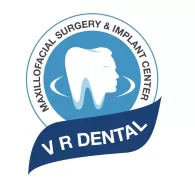Dental crowns and bridges are common restorative dental procedures that can help improve the appearance, function, and overall health of your teeth. If you have damaged, missing, or decayed teeth, your dentist may recommend a crown or bridge as a solution.
A dental crown is a tooth-shaped cap that covers the entire visible portion of a damaged tooth. It is commonly used to restore a tooth that has been cracked, chipped, or weakened by decay. The crown is custom-made to fit your tooth and is designed to look and feel like a natural tooth. It is typically made from materials such as porcelain, metal, or a combination of both.
To place a crown, your dentist will first prepare the damaged tooth by removing any decay or old filling material. They will then shape the tooth to make room for the crown. Finally, they will take an impression of your tooth and send it to a dental lab to create the custom crown. In the meantime, a temporary crown will be placed over your tooth to protect it. Once the permanent crown is ready, your dentist will remove the temporary crown and place the new crown over your tooth using dental cement.
A dental bridge, on the other hand, is used to replace one or more missing teeth. It is made up of two or more dental crowns that are attached to the teeth on either side of the gap, with a false tooth (or teeth) in the middle. The crowns on either end of the bridge are called abutment teeth, while the false tooth (or teeth) in the middle is called a pontic.
To place a bridge, your dentist will first prepare the abutment teeth by removing a portion of the enamel and reshaping them to make room for the crowns. They will then take an impression of your teeth and send it to a dental lab to create the custom bridge. In the meantime, a temporary bridge will be placed over the gap to protect your teeth and gums. Once the permanent bridge is ready, your dentist will remove the temporary bridge and place the new bridge over your teeth using dental cement.
Both dental crowns and bridges can provide many benefits for patients. They can restore the function and appearance of damaged or missing teeth, help improve bite and alignment, prevent further damage or decay, and boost overall oral health. They are also durable and long-lasting, with proper care and maintenance.
However, there are some potential drawbacks to consider as well. Both procedures can be costly, and may not be covered by insurance. They also require multiple appointments and can be uncomfortable or painful during the preparation and placement process. Additionally, dental crowns and bridges may need to be replaced or repaired over time, especially if they become damaged or worn down.
If you are considering a dental crown or bridge, it is important to discuss your options with your dentist. They can evaluate your oral health and recommend the best course of action for your specific needs and budget. With proper care and maintenance, a dental crown or bridge can be a great investment in your oral health and overall well-being.
Dental crowns are one of the most important restorations we offer. A crown can save a broken or decayed tooth by holding it together & protecting it from further damage. It can also serve as a beautiful replacement for an unsightly tooth.
A crown also called a cap, is a good way to cover teeth that are discolored or badly shaped as well, or to cover a dental implant. A crown can make your tooth stronger & improve its appearance.
A crown acts the same way as a tooth, so after your crowns are placed, you should treat it the same way as well. Continue to brush & floss regularly & see your dentist for regular checks!
In dentistry, ‘crown’ is a term used to describe both the natural part of the tooth that is visible above the gum level and an artificial cap used to rebuild and strengthen a weakened tooth. Affordable Crowns and Bridges
A crown surrounds the whole tooth structure and is cemented permanently compared to an onlay which may cover approximately fifty to seventy-five percent of a tooth and is also cemented permanently. Teeth need to be ‘crowned’ or protected by an onlay if there is a large filling on the tooth if there is evidence of cracks within the tooth structure if part of the tooth is cracked or if the tooth has had a previous root canal treatment, all of which can significantly reduce tooth strength.
Crowns can be mainly divided into 3 different types. Historically gold used to be a very popular material due to its malleable properties, biological compatibility, and resistance to corrosion. It behaves much like enamel in the mouth hence a well-done gold crown can last for many decades.
The main disadvantage of gold is aesthetics. It is still used today mostly for restoring posterior teeth, especially for patients who have heavy bites and/or have parafunctional habits such as grinding. Gold is more forgiving on the opposing teeth for someone who grinds their teeth compared to porcelain and is less likely to fracture under high loads. Onlays can also be made of gold and provides beautiful restorations in the mouth.
The main disadvantage of gold is the aesthetics. It is still used today mostly for restoring posterior teeth, especially for patients who have heavy bites and/or have parafunctional habits such as grinding. Gold is more forgiving on the opposing teeth for someone who grinds their teeth compared to porcelain and is less likely to fracture under high loads. Onlays can also be made of gold and provides beautiful restorations in the mouth.

